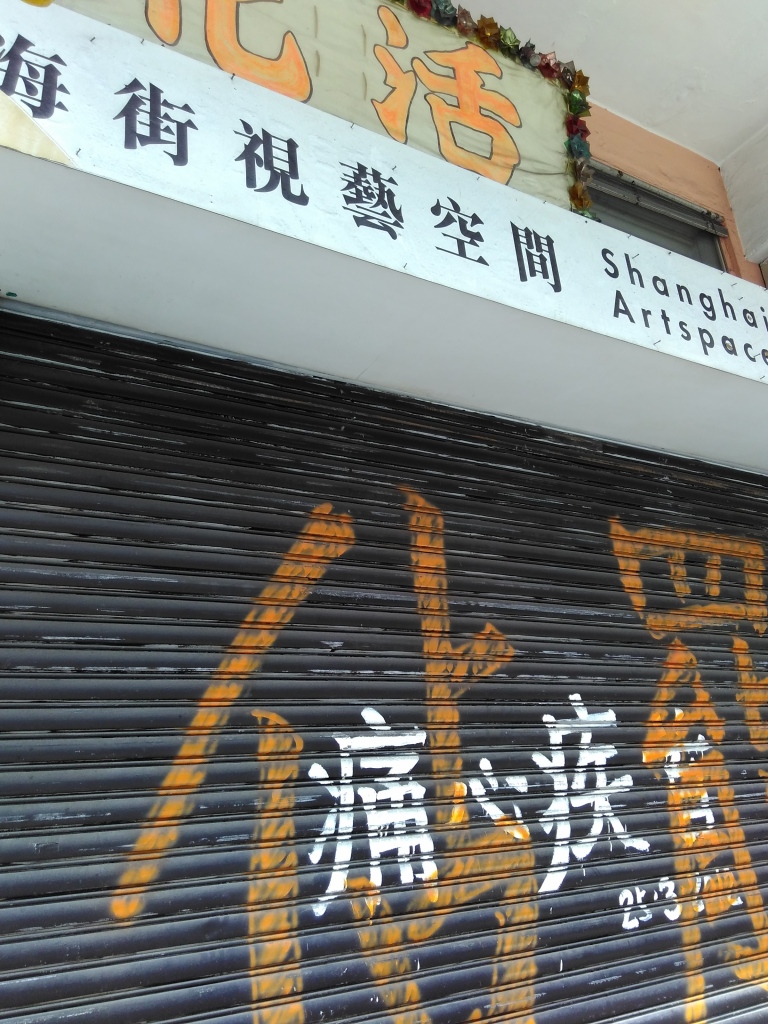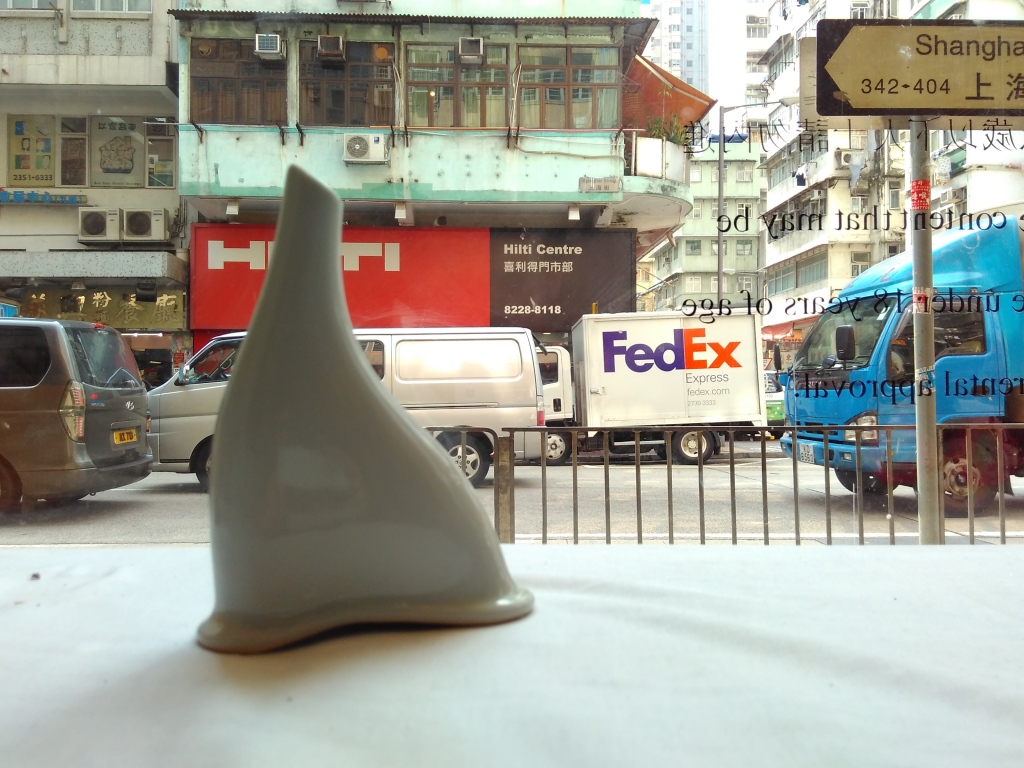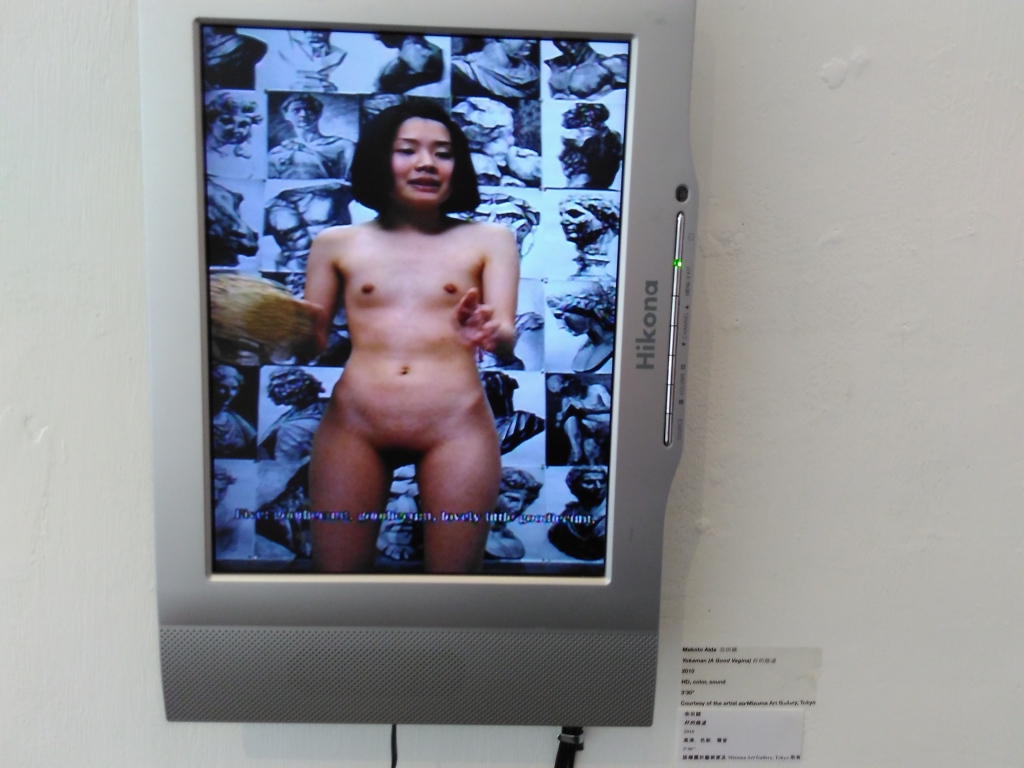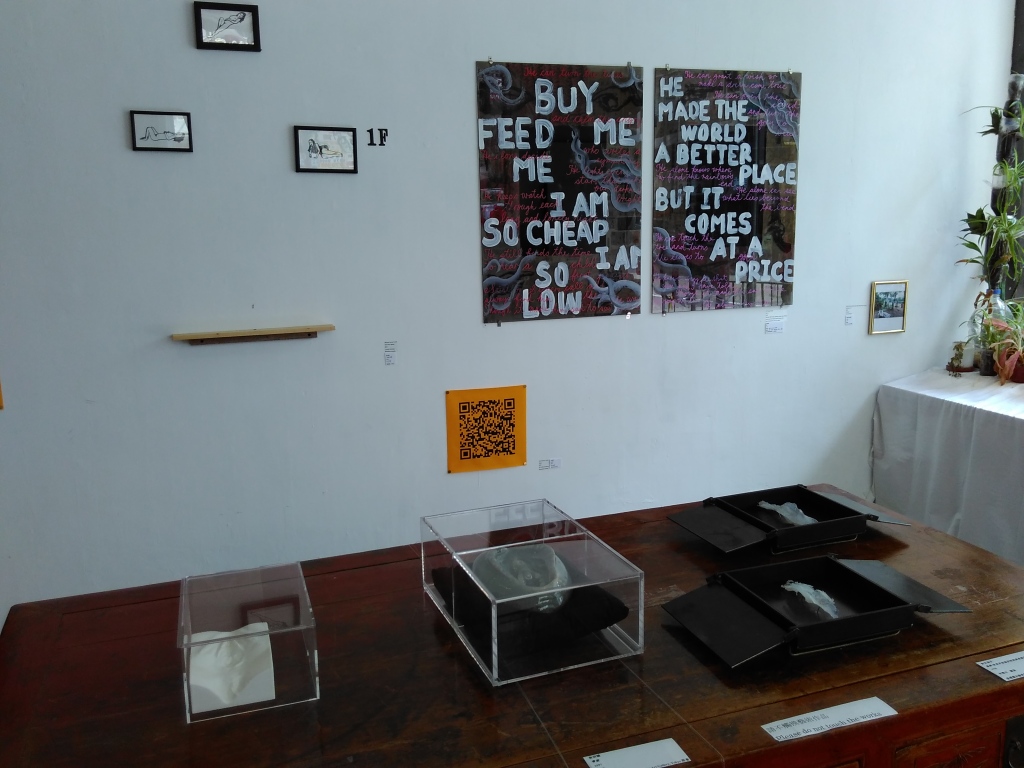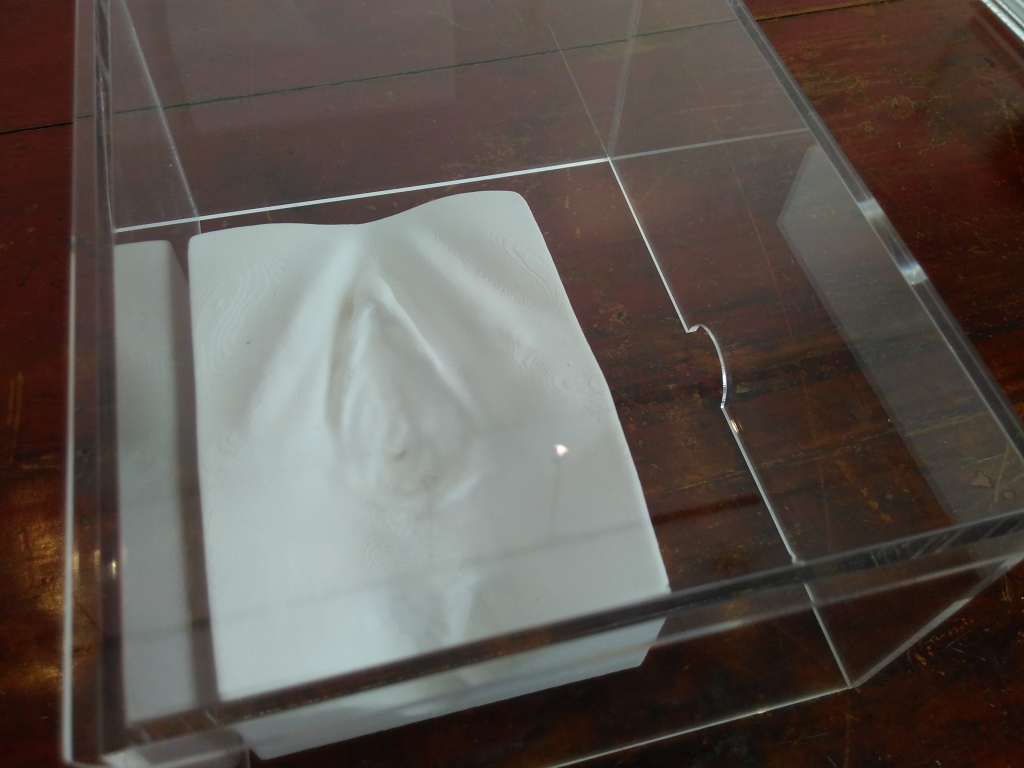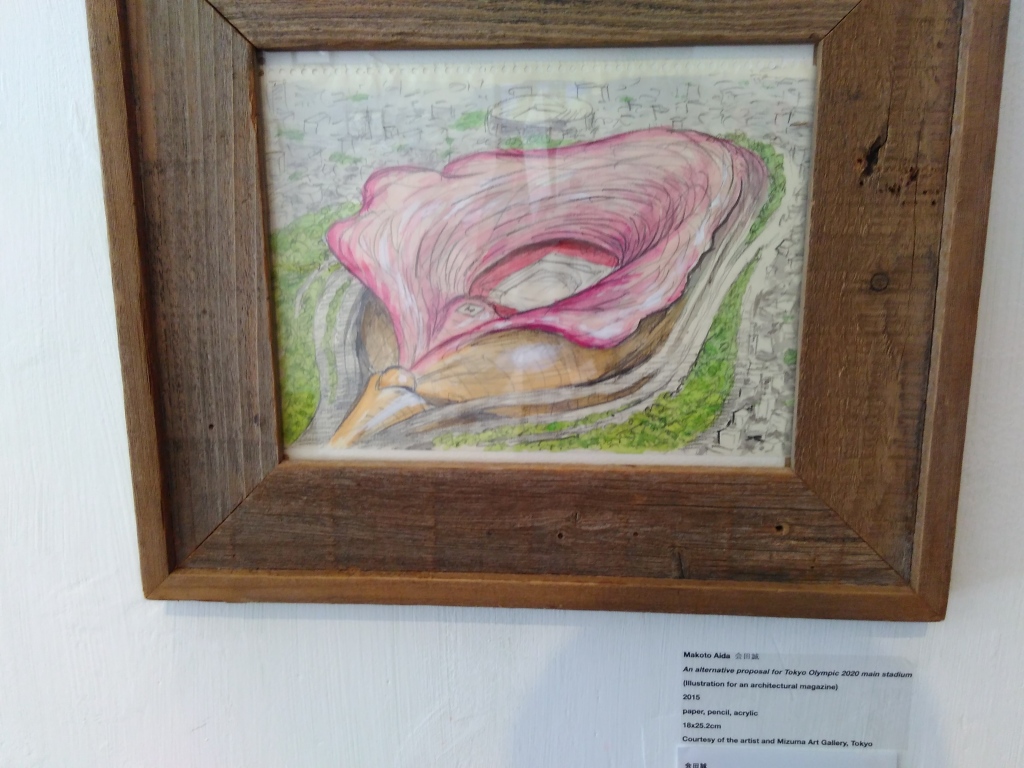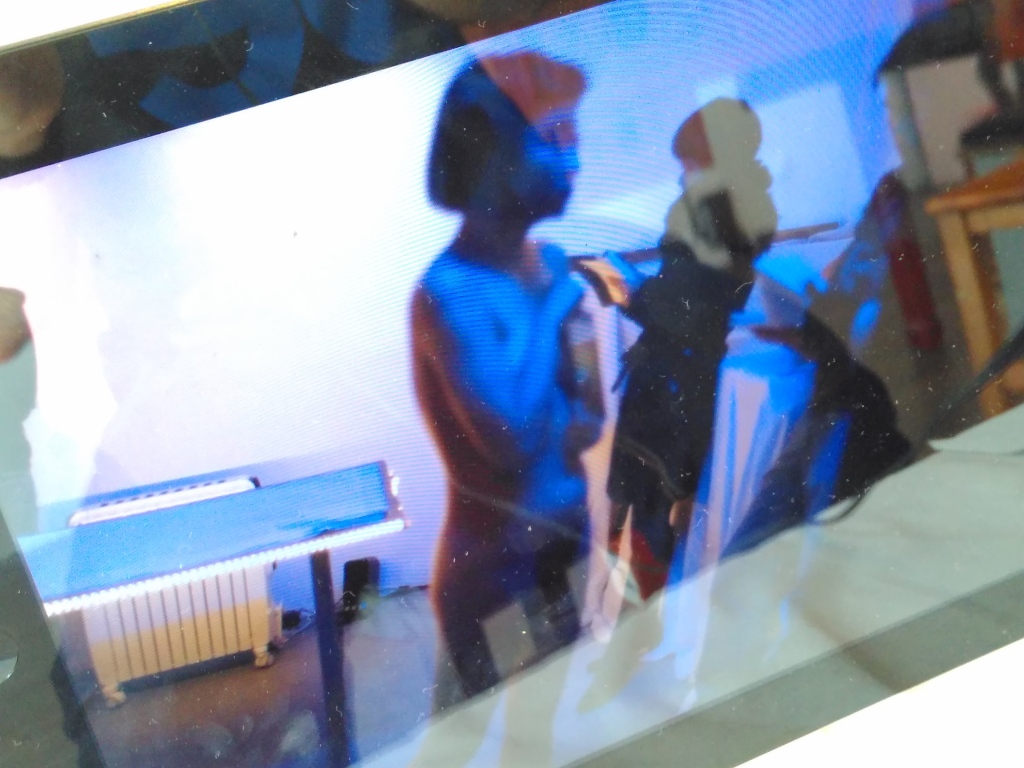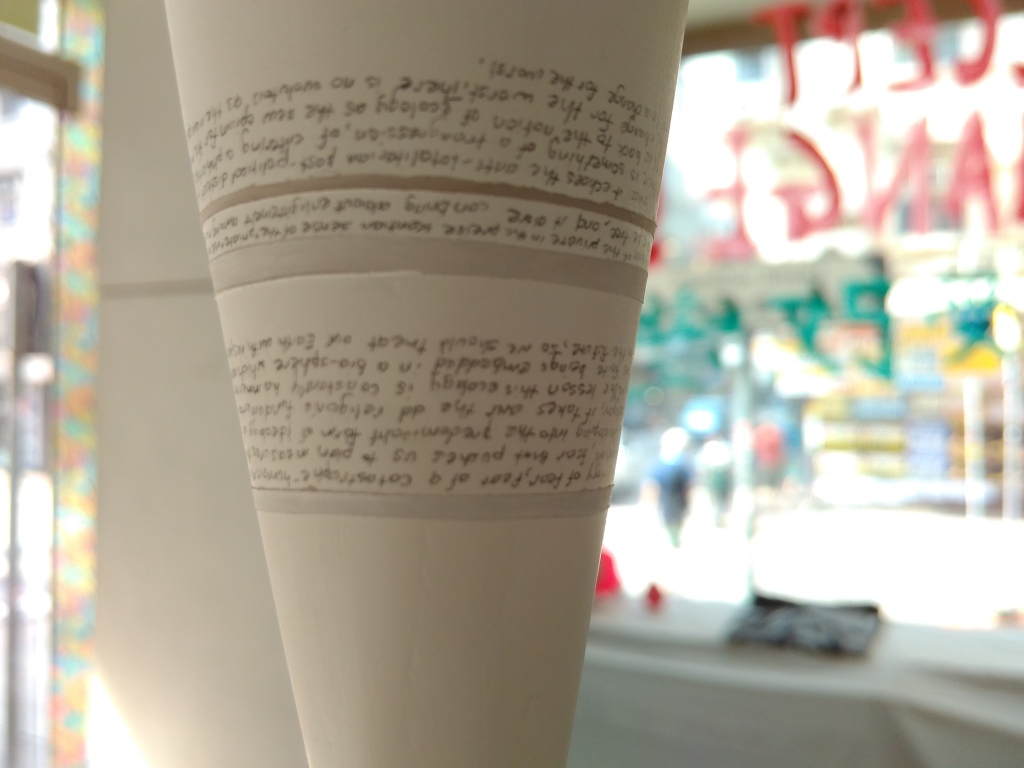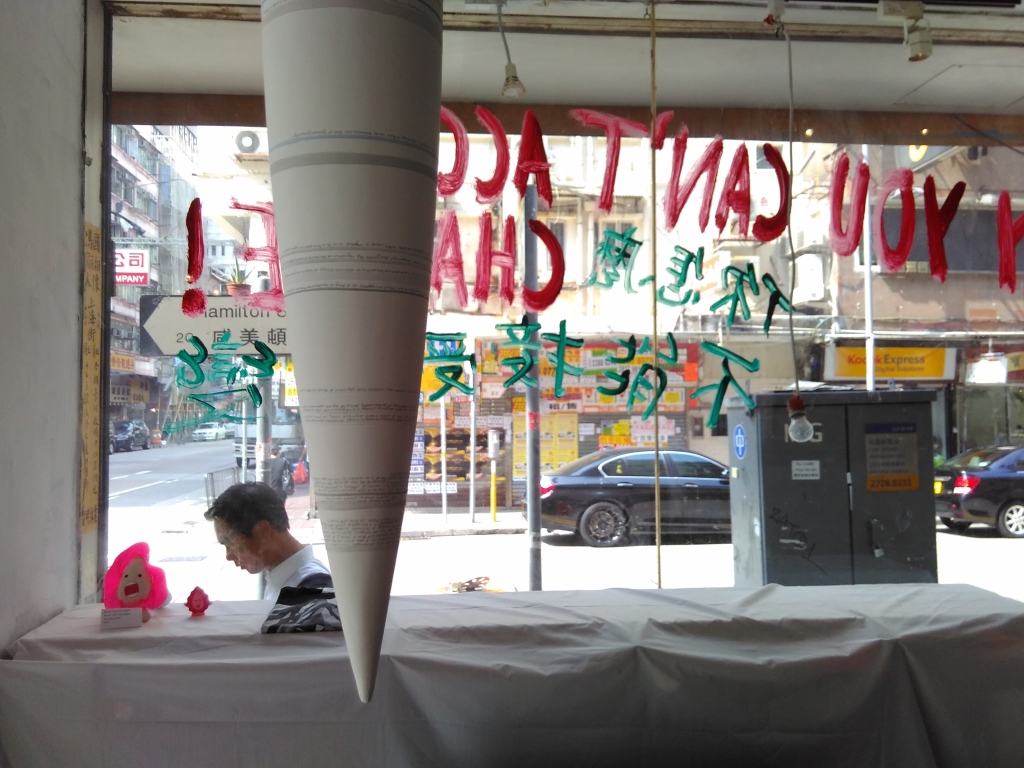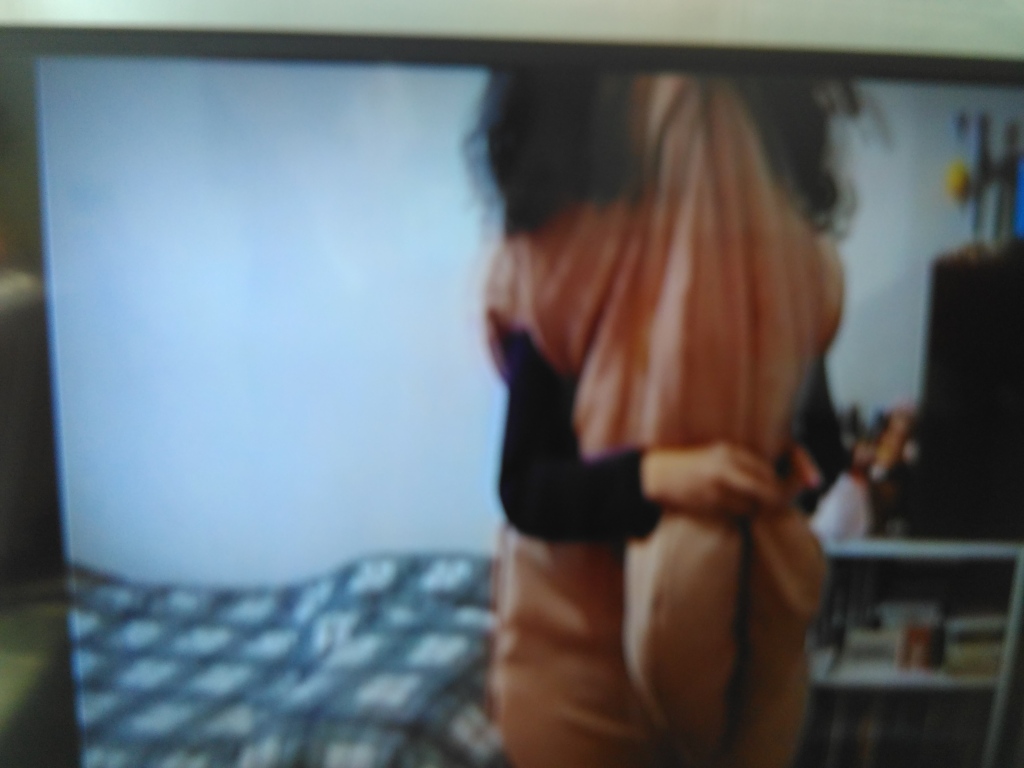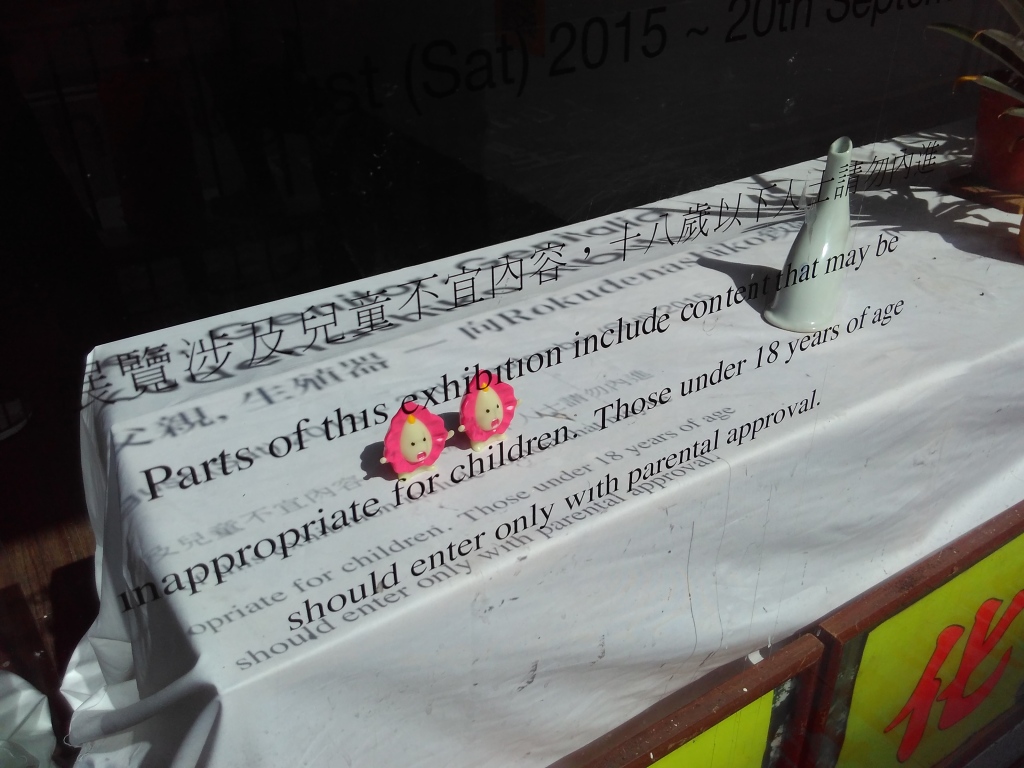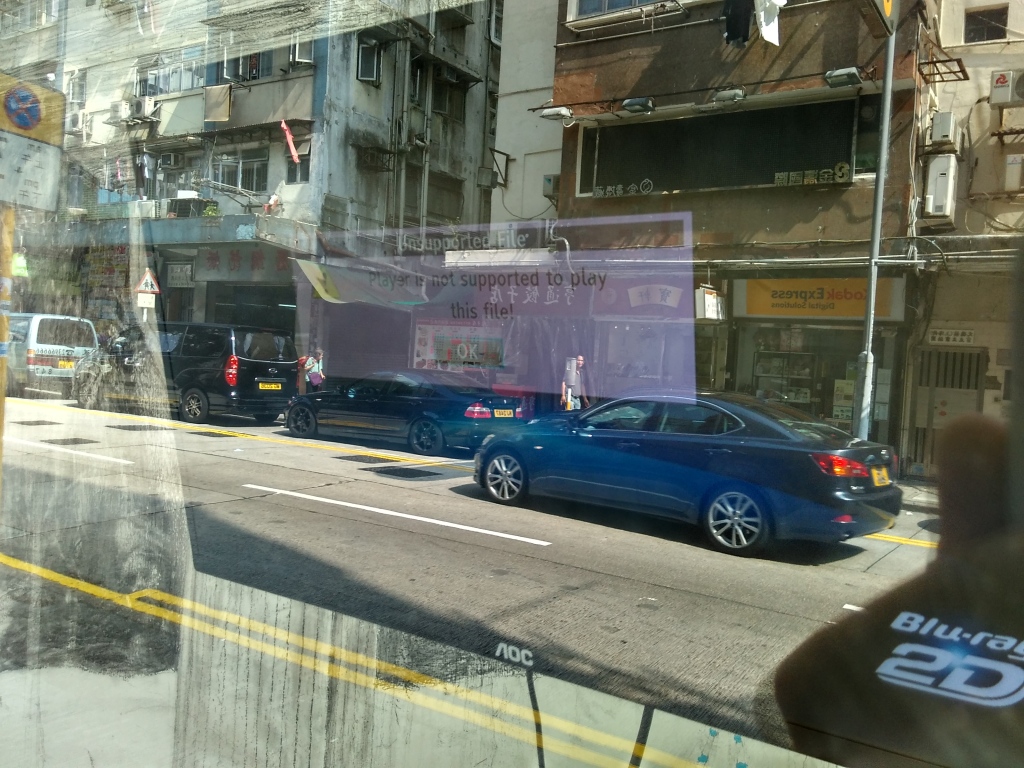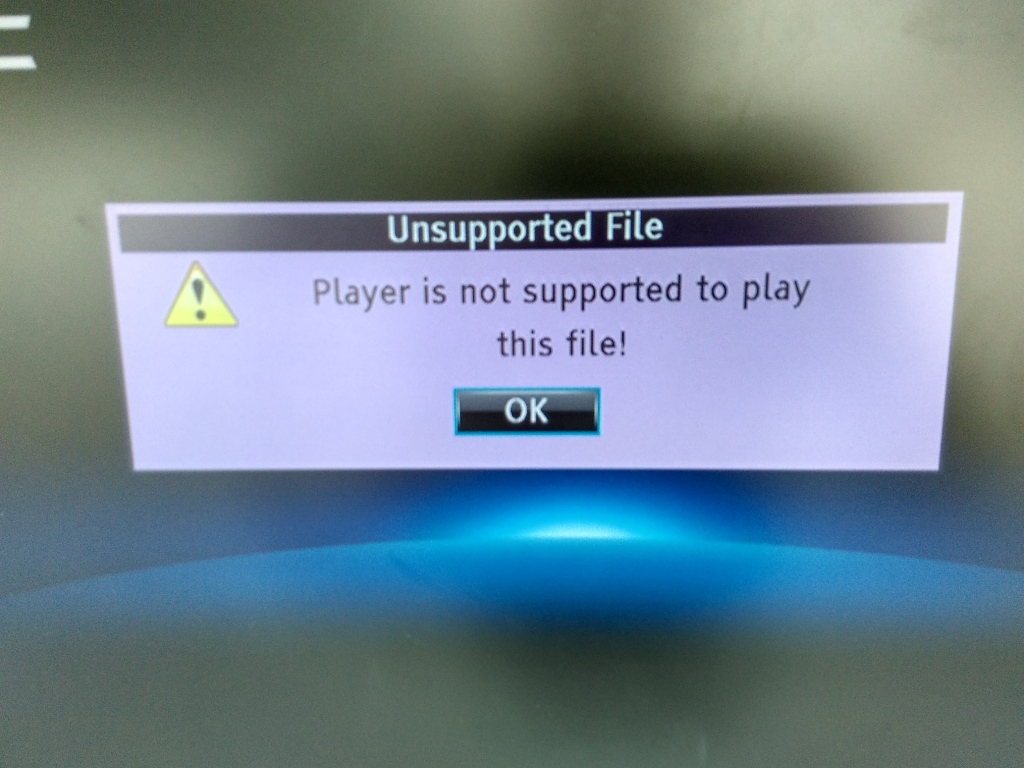Hong Kong, August 29 – September 20, 2015, http://wooferten.blogspot.hk/ https://www.facebook.com/events/1445782452408927/
Curator: Hitomi Hasegawa, Artists: 会田誠 Makoto Aida, LING & COMMA (Gao Ling 高靈 & Elaine W. Ho 何穎雅 ), 梁志剛 Michael Leung, 文晶瑩 Phoebe Man, ROBOT (Takuji Kogo 古郷卓司 及John Miller), Rokudenashiko (Megumi Igarashi五十嵐惠), 林愷倩 Lam Hoi Sin, Sputniko!, 鈴木涼子 Ryoko Suzuki, Yuk Kin Tan, 陳美彤Chan Mei Tung, 黃嘉瀛 KY Wong
According to the press release, the organizers attempt to raise awareness about the trial of a Japanese artist in Japan, Rokudenashiko, “for distributing her 3D vagina data on an internet crowd funding site” and more broadly, to “examine feminism and questions digital obscenity in this exhibition”.
At first I was quite surprised to see Wooferten organizing this kind of exhibition. Wooferten is a small converted shop in Yau Ma Tei, and I positioned it mainly as an event location, artistically focusing on local community art, social activism, etc. I did not see it as a place that would take up some big, universal and impossible to resolve topics like gender equality or sexual freedom in another country. And indeed the exhibition has actually been organized by an external team, headed by Japanese curator Hitomi Hasegawa, rather than the Wooferten community itself.
While grime still encroached onto the space from all sides, the interior has been cleaned up inside as much as possible, to at least resemble a white-cube like space. While it was a very shabby white cube by white cube standards, within the crumbling walls and greasy sidewalks of Yau Ma Tei it was a shining white bright spot. Inside, within the very small and compact space, the curator was able to set up a show what was coherent, meaningful and provocative.
This show could have well defended its purpose of existence within a much larger gallery space, but even as it was, within the site-specific constraints, it stood out as quite special. In Hong Kong, the only other comparable shows would be some of the research-based shows organized by Para Site, even though this one was a bit more punk and provocative.
In terms of the exhibition contents, there will be many different opinions on what is suitable and what not, and that was the purpose of this show, to generate a discussion. Generally speaking, the object of display has been Asian pussy in a multitude of forms and media by a mixture of Japanese and Hongkongnese artists.
Phoebe Man’s Rati, was the work that was most multi layered and funny, as it was basically a parody of what Rokudenashiko is doing by presenting herself as the vagina artist: Man dressed up as a big teddy vagina, going on in her daily business, parodying the vagina-obsession which actually unites Rokudenashiko with billions of male porn fans worldwide.
Makoto Aida’s works were also standing out, but for different reasons. Here it was the typical sexploitation that made them successfully solicit attention: Nothing is too holy or too perverse for Aida. Especially the video of the female version of the traditional Japanese “good penis” song (“good vagina”), presented by one of (possibly his own) teen-looking female university students looked most of all like a preface for Jap-porn flick. The vagina-shaped stadium design was more of a practical joke, and the celadon vagina tile, a 20 year older contemporary of Rokudenashiko’s privates, stayed without legal consequences possibly thanks to the author’s male gender.
Compared to these works, Rokudenashiko’s manga-vaginas looked rather tame and bland. Overall, Japanese artists managed to keep up their score as the masters of explicit content in Asia, and Hongkongers had a hard time keeping up with that, even though they executed a number of successful counter-attacks, mainly by utilizing irony and jokes (like Man’s Rati or Ling & Comma’s Nv Quan porcelain peecup).
By the way, there have been some dicks in the show too, hidden behind QR codes and metaphorically present in the phallic model of a rocket looming above.
Feminism is a never-ending topic waiting to be resolved, so let’s conclude with some questions to think about:
Will displaying one’s vagina on a pedestal actually bring about more gender equality and meaningful change (that is what the organizers claim they are after)? Much more than that, is it not counter-productive, as it presents a women’s vagina as a separate object put on display, exactly as it is done in POV hardcore porn, where women are reduced to holes to be penetrated? I feel the logic at play here is one of criticism by exaggeration, a kind of feminist accelerationism of fighting the evil with more evil, hoping for its collapse. But will a collapse come? Once we have larger than real pussies on billboards, t-shirts and TV ads all across the city, will our world be a better place? Rather than bettering the world and fighting for freedom of expression, the attempt smells with artistic strategy of soliciting attention. Advertising is already full of over-sexualized content only held back by legal constraints, because since Edward Bernays’ seminal appropriation of psychoanalysis for propaganda purposes, everyone knows that sex sells. And it will sell as long as 50% of the world’s population desires something only the other 50% of the world’s population has – a vagina. I assume it works the other way too, with penises, but the thriving prostitution and porn industry hints at a supply-demand imbalance. The concentration of pussy in the show has been comparable to aforementioned porn movies, now justified by an artistic and emancipatory purpose. Objectification has overtaken emancipation. This is a chicken and egg situation that can be discussed forever: What was first: The vagina, or the male gaze at it? (The penis, or the female gaze at it?)
Lastly, let’s return to the beginning of this article: It was really extraordinary that such a show has been organized in Yau Ma Tei. It was priceless to observe some unknowing mid-aged ladies entering the shop, maybe after mistaking the peecup for a porcelain vase, and listening to the gallery attendant explaining them that this is a show about feminism (“What is that?”). For the neighborhood inhabitants, it must have been a very surprising event. Maybe this was the historical first of this topic in this format in this district. Maybe this was the first signal of a transformation of the area into the next hip art address. Recent months have witnessed the opening of a few spaces in Sham Shui Po (which is even cheaper than Yau Ma Tei), but with the right programming and backing, Yau Ma Tei may well become the next hip art crowd stop. “Gender, Genitor, Genitaia” broke with many expectations, bringing some excitement into an unexpected corner of Hong Kong. 
